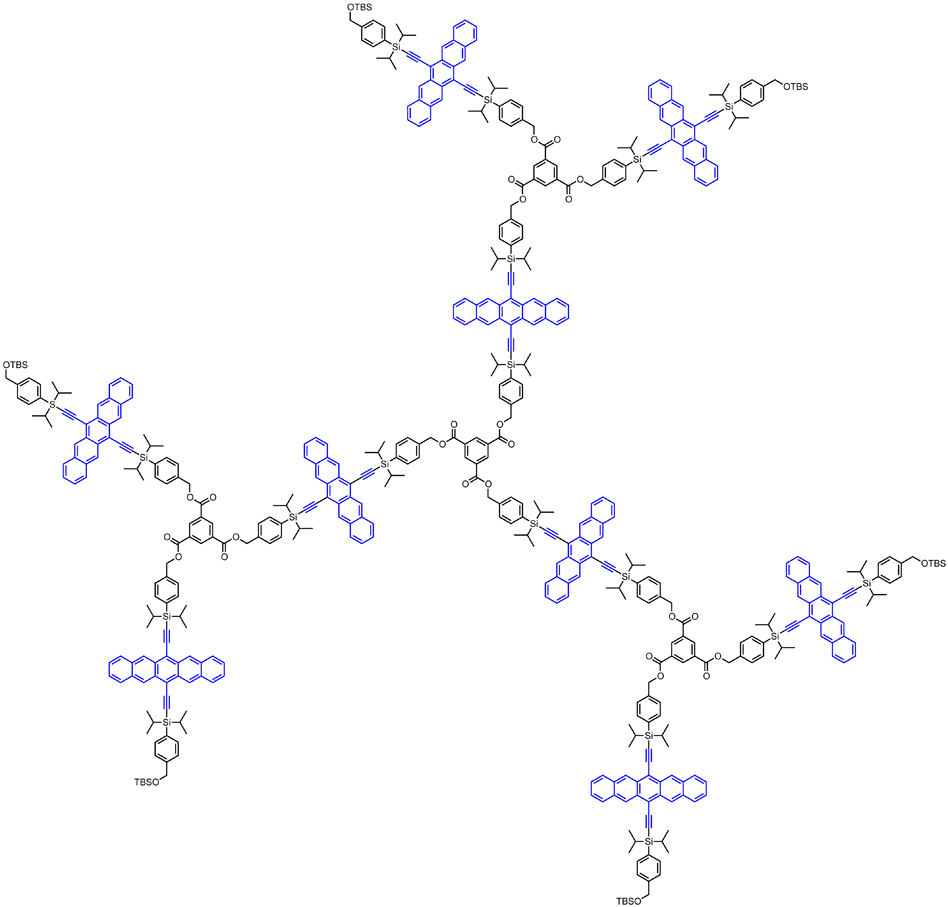Projects
Singlet Fission • Heteroacenes and FETs • Catalysis and Mechanistic Studies • Conjugated Oligomers • Foldamers and Nanographenes • Photodetectors • PAH Dyads
Pentacene-Based Photodectetors (Linear Oligomers, Dendrimers and Polymers) |
The incorporation of the pentacene chromophore into oligo- and polymeric materials can aid in achieving stable, soluble materials towards improving the processability [1] and device performance of pentacene-based materials.[2] A variety of synthetic methods were developed to achieve these goals and ultimately utilize pentacene-based oligomers and polymers in a variety of optoelectronic devices, including photodetectors.

Figure 1. Pentacene-based materials, linear and branched oligomers as well as polymers derived from a common building block (monomer).
The solid-state organization of a chromophore (morphology) can strongly influence the properties of a substance. Pentacene-based dendrimers [3] were designed and realized towards controlling the relative organization of the chromophores in the solid-state to improve the performance of pentacene-based photodetectors. Photodetectors based on thin films of these new dendrimers reveal increased photocurrent and photocurrent yield (photogeneration efficiency) in comparison to analogous linearly connected pentacene-based polymers.[4]

Figure 2. (a) Schematic diagram of pentacene-based photodetector, (b) photocurrent response and (c) photocurrent yield as a function of wavelength.
[1] D. Lehnherr, R. R. Tykwinski, Org. Lett. 2007, 9, 4583—4586. [PDF]
[2] D. Lehnherr, J. Gao, F. A. Hegmann, R. R. Tykwinski, Org. Lett. 2008, 10, 4779—4782. [PDF]
[3] D. Lehnherr, J. Gao, F. A. Hegmann, R. R. Tykwinski, J. Org. Chem. 2009, 74, 5017—5024. [PDF]
[4] D. Lehnherr, R. McDonald, M. J. Ferguson, R. R. Tykwinski, Tetrahedron 2008, 9, 4583—4586. [PDF]

Figure 3. Chemical structure of pentacene-based dendrimer 2.